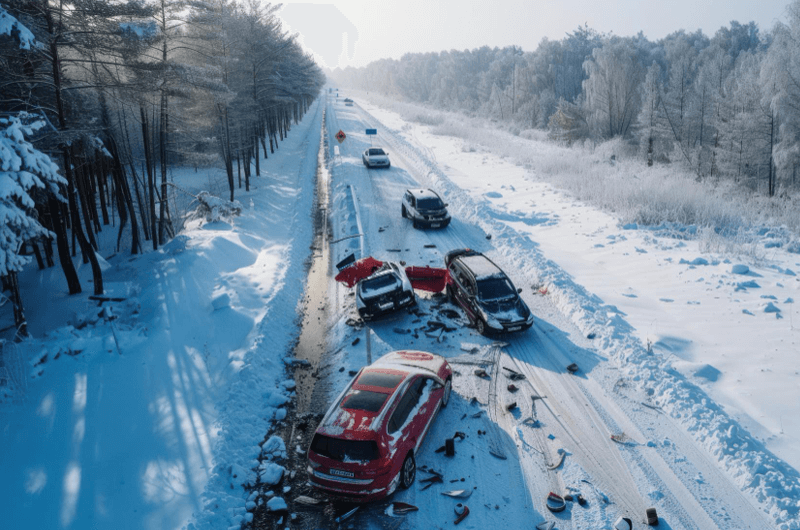ICD-10 medical coding includes documenting a range of external causes for injury, and you may need to use these specific codes especially during the winter season. Driving during winter months is dangerous. The leading cause of death during winter storms is transportation accidents. Heavy snow, ice, strong winds and freezing rain can impact the driver’s visibility, causing the vehicles to slide out of control and collide with other vehicles. According to a report from SafeWinterRoads.org, over 1,300 people are killed and more than 116,800 people are injured in vehicle crashes on snowy, slushy or icy pavements annually. It is also reported that the winter road maintenance accounts for roughly 20 percent of state Department of Transportation maintenance budgets.
Believe it or not, ICD-10 has specific codes that suit particular situations of winter vehicle accidents. Whether a motorcycle rider, car occupant or even a pedestrian is injured in accident, these details can be well documented with ICD-10.
Chiropractors are specialists in the treatment of auto injuries and other types of injuries and conditions causing pain and trauma. Often, vehicle crashes can lead to a series of injuries, such as whiplash and other strain injuries, broken bones, bruises, scratches, concussions and head injuries that can be treated by an efficient chiropractor. Accurate diagnosis and appropriate medical coding are essential from the viewpoint of reimbursement. Given the specificity of ICD-10 codes and the complexity of assigning these codes, chiropractic billing services can prove helpful for chiropractors.
Let us look at some of the ICD-10 codes that can be used to report injuries and external causes during the winter season –
- V03 – Pedestrian injured in collision with car, pick-up truck or van
- V04 – Pedestrian injured in collision with heavy transport vehicle or bus
- V33 – Occupant of three-wheeled motor vehicle injured in collision with car, pick-up truck or van
- V37 – Occupant of three-wheeled motor vehicle injured in collision with fixed or stationary object
- V43 – Car occupant injured in collision with car, pick-up truck or van
- V43.51XA – Car driver injured in collision with sport utility vehicle in traffic accident, initial encounter
- V44 – Car occupant injured in collision with heavy transport vehicle or bus
- V74 – Bus occupant injured in collision with heavy transport vehicle or bus
- V89 – Motor- or non-motor vehicle accident, type of vehicle unspecified
- W22.11XA – Striking against or struck by driver side automobile airbag, initial encounter
Here are some codes for external causes:
-
- V06.19 – pedestrian with other conveyance injured in collision with other non-motor vehicle in traffic accident. Under this code set, the following specific circumstances are included:
- Pedestrian on ice-skates injured in collision with other non-motor vehicle in traffic accident
- Pedestrian on sled injured in collision with other non-motor vehicle in traffic accident
- Pedestrian on snowboard injured in collision with other non-motor vehicle in traffic accident
- Pedestrian on snow-skis injured in collision with other non-motor vehicle in traffic accident
- Y93.2 – for injuries caused by activities involving ice and snow.
- Y93.23, activity, snow (alpine) (downhill) skiing, snowboarding, sledding, tobogganing, and snow tubing
- Y93.24, activity, cross country skiing
- V06.19 – pedestrian with other conveyance injured in collision with other non-motor vehicle in traffic accident. Under this code set, the following specific circumstances are included:
This series excludes injuries related to shoveling snow and ice (these are to be reported using external causes code Y93.H1)
-
- W00.- series (fall due to ice and snow):
- W00.0, fall on same level due to ice and snow
- W00.1, fall from stairs and steps due to ice and snow
- W00.2, other fall from one level to another due to ice and snow
- W00.9, unspecified fall due to ice and snow
- W00.- series (fall due to ice and snow):
You must include a seventh character to denote the encounter. You will have to add two X placeholders. The W00.0 series also includes collisions with another person as for instance when you go sliding across an icy sidewalk and collide with an innocent bystander.
Hypothermia (T68-) is a condition that people could develop in winter. To report this condition, you must use an additional code to describe the source of exposure.
- W93 – exposure to excessive cold of man-made origin
W93 needs a seventh character to signify the encounter type:- Exposure to cold NOS
- Exposure to weather conditions
- Excessive cold as the cause of immersion foot or hand
- Excessive cold as the cause of chilblains NOS
W93 excludes:
- Contact with or inhalation of dry ice and liquefied gas
- Cold of man-made origin
- X31 – exposure to excessive cold of natural origin
External cause code reporting is highly encouraged with ICD-10-CM, as it offers the opportunity to report enhanced detail, and could streamline the process of claims submission and payment adjudication. External cause codes can also improve the process of data collection for researchers and policy makers. Professional medical coding companies assisting chiropractors stay up-to-date with the latest coding guidelines and standards recommended by the AAPC and CMS.




